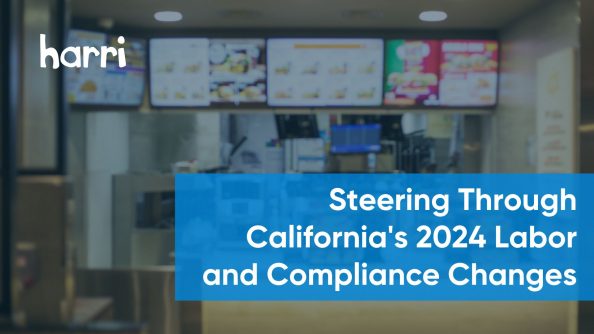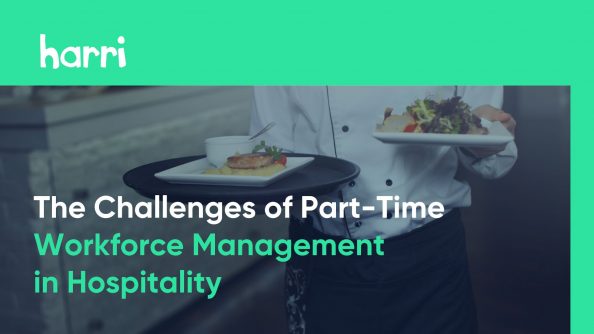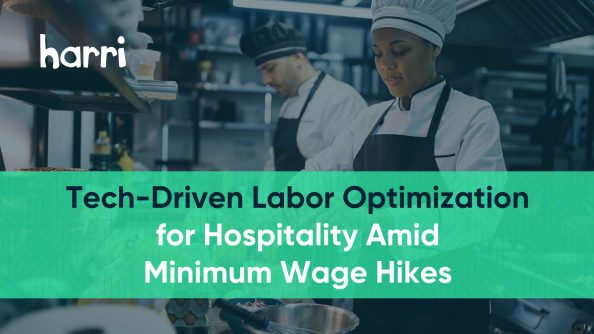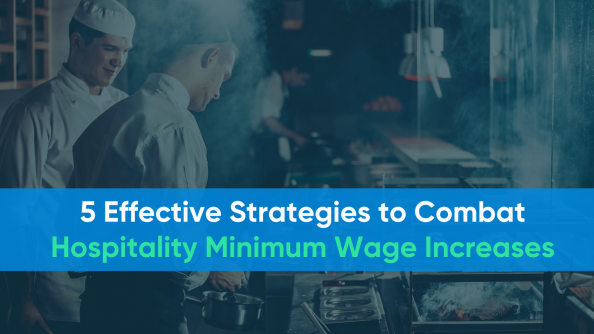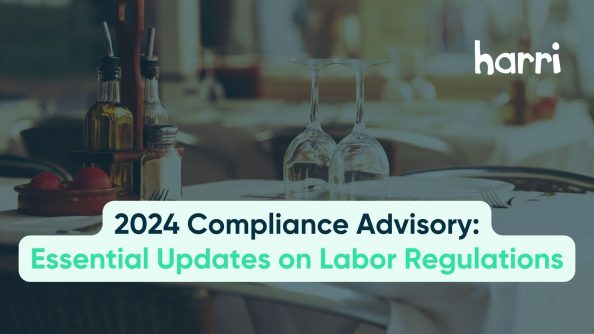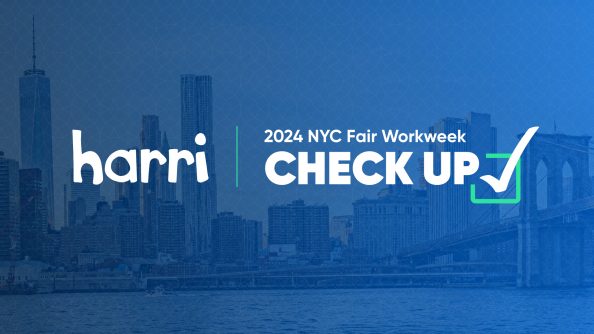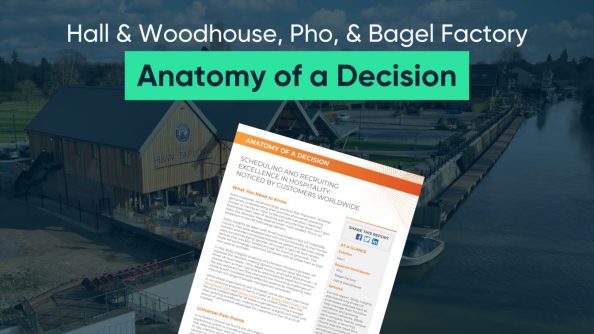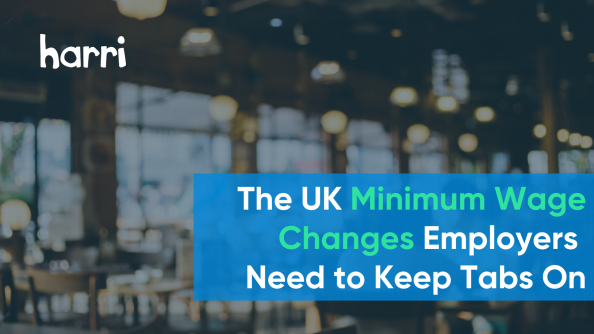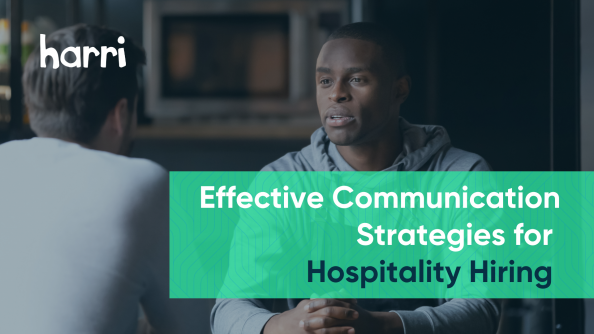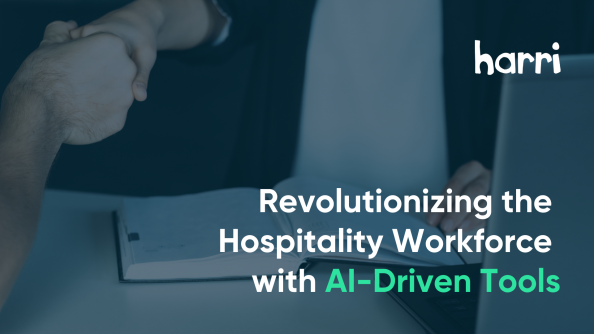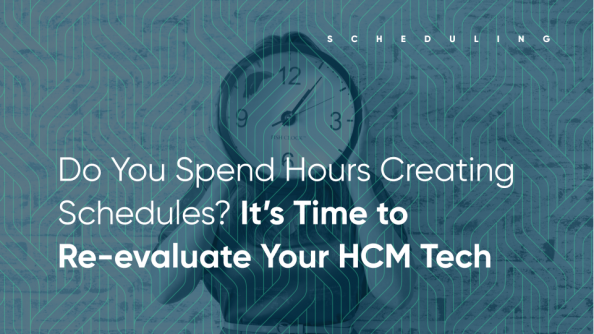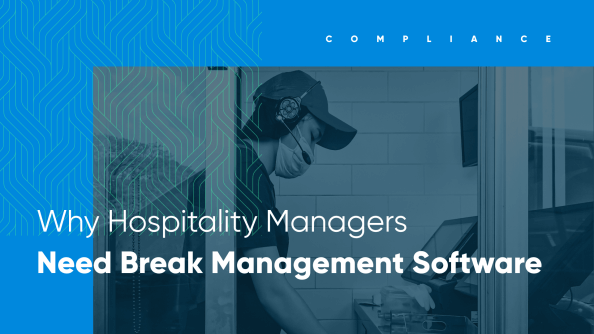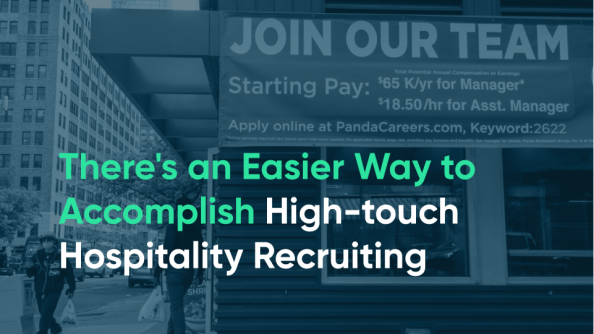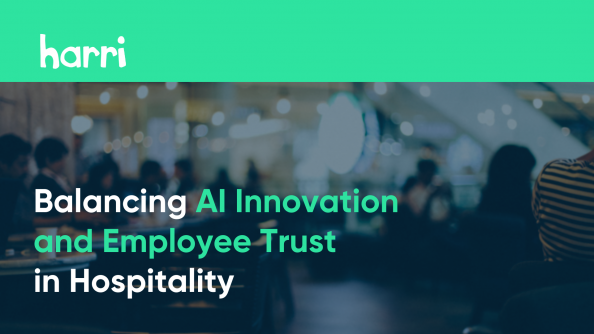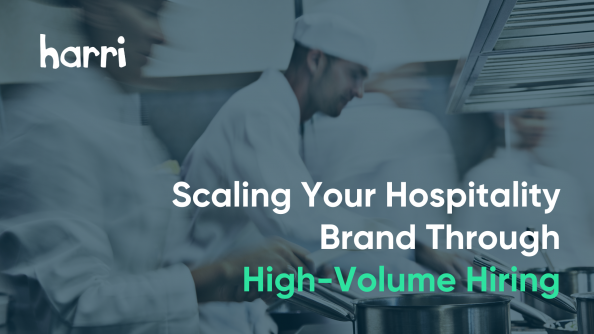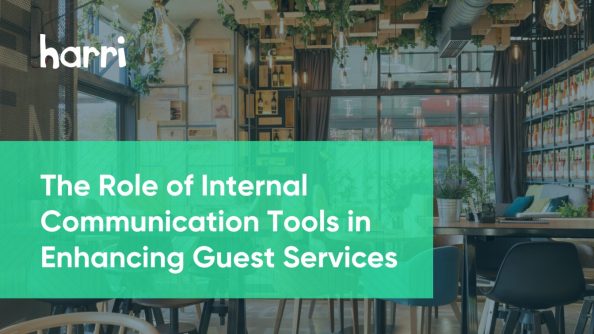Enterprise HCM Technology Consideration Guide for Hospitality
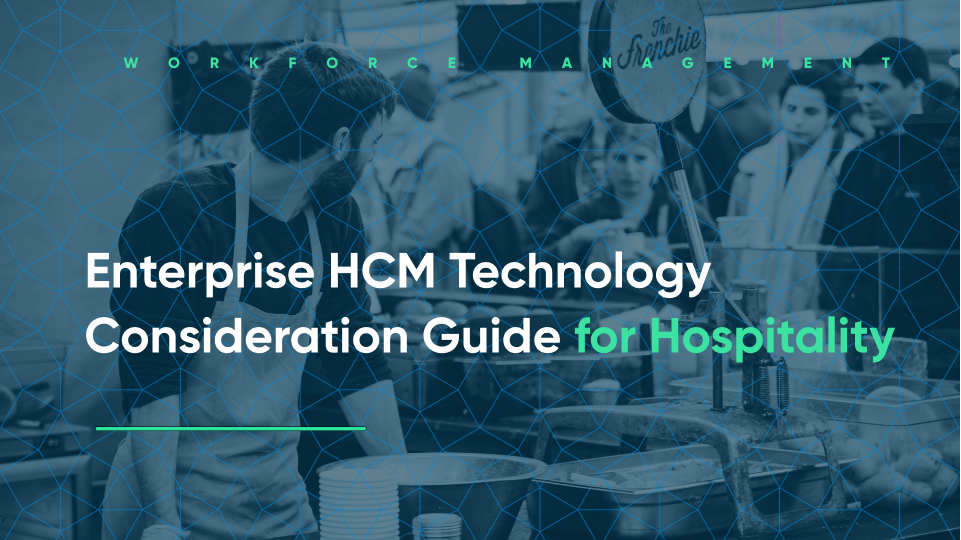
- By Harri Insider Team | May 5, 2021
The hospitality business faces many unique challenges, pain points, and compliance susceptibilities that are impossible to address without a singular HCM platform. Relying on your existing tools and processes might seem like the easier path. After all, they’ve worked for you for this long, right? However, failure to keep up with the rapidly shifting demands of the hospitality industry will prove fatal to any enterprise business not willing to adapt.
We get that the thought of transitioning to a new HCM software is overwhelming. Implementing tools take time, money, and resources from your teams. There’s a lot to consider when looking for the perfect solution for your hospitality business.
Today, we’ll help you understand how your HCM tech stack is affecting the success of your business, what to look for in an HCM solution, and how modern HCM tools properly utilize your most valuable resource, your employees.
What led us here?
HCM processes have remained static for far too long, and it’s exactly those broken processes that lead to poor decision-making. Running an enterprise business has become so complexly data-driven that HCM tools aren’t able to connect the dots to address operational needs. A wise ruler once said, break the wheel.
Let’s look at employee attendance data and scheduling performance. These are crucial KPIs for any enterprise business. Traditionally, businesses monitor these data points, among many others, in an HCM system.
Except there’s never just one HCM system. Most hospitality businesses are running on anywhere from 3 to 7 different HCM and WFM tools. This results in process gaps and massively fragmented data that isn’t properly utilized or leveraged within the company. Complications are worsened during personnel changes, the introduction of new HCM tools, or even when an employee forgets to update one of the many tools in place.
QSR brands need to shift their focus to a system that focuses on workflow efficiency and the employee experience all within a single, unified platform. We always say that people performance is the ultimate way to drive success.
Enterprise-grade technology needs
Let’s look through the lens of an enterprise hospitality business. There are plenty of unique challenges that come with managing HCM processes at such a large scale.
Enterprise hospitality businesses need to restructure their tech architecture in a way that:
- Futureproofs HCM processes in their business
- Strategically drives businesses performance through people performance
- Consolidating redundant technologies to drive efficiencies and drive down cost base
- Cohesively addresses compliance needs and mitigates risk
- Improves the employee and candidate experience in a way that be a driver of retention
- Integrates to BI visualization stack
The below image shows us a tech stack used by a real (but anonymous) enterprise hospitality business:
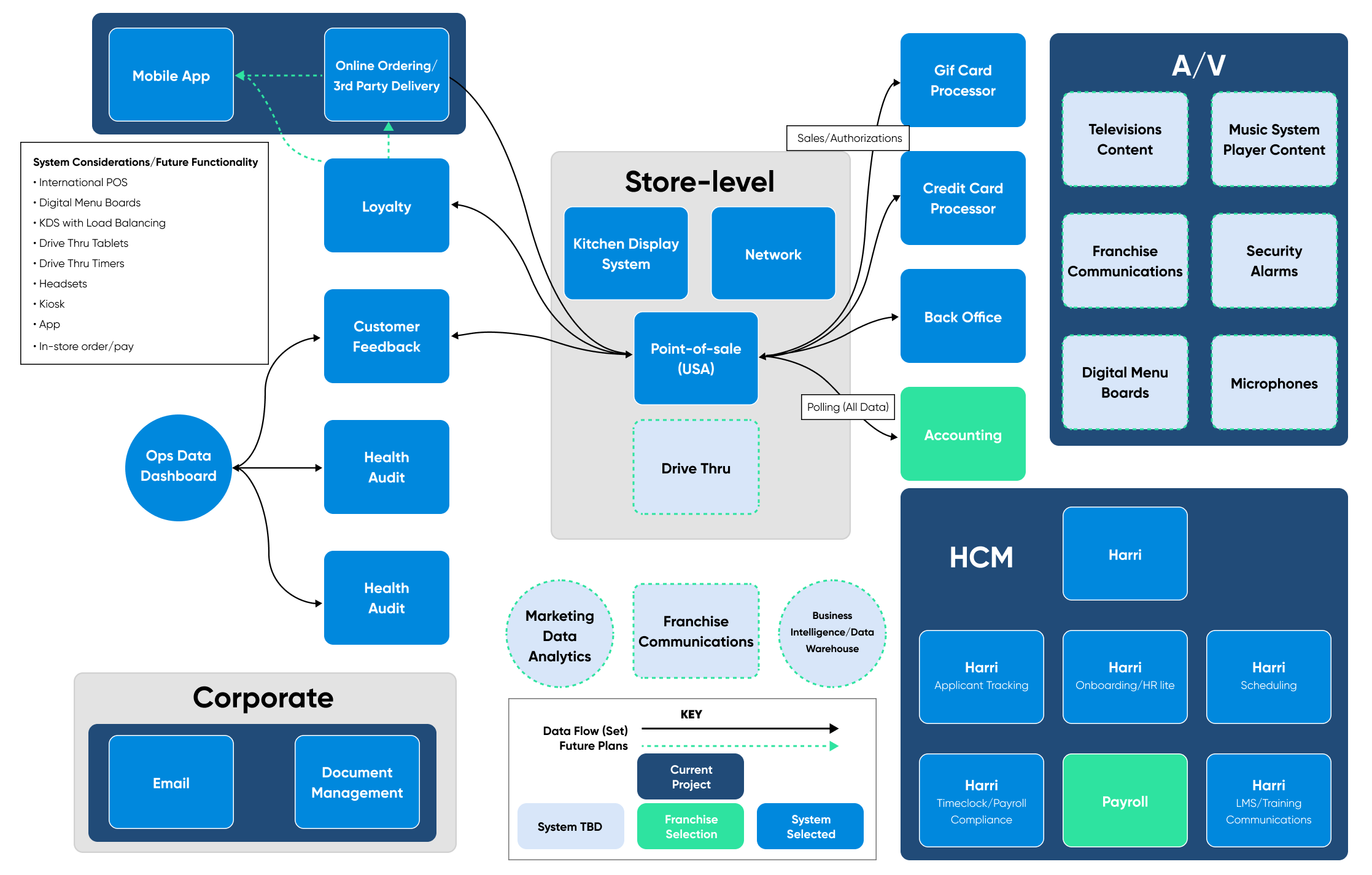
Here we see that HCM software consists of:
- Applicant tracking
- HR and employee onboarding
- Scheduling
- Payroll
- Timeclock and payroll compliance
- Employee training and communications
These are all smaller parts within the entire functioning enterprise ecosystem. But, because these parts are people-focused, inefficient processes set up other crucial business functions for failure.
Imagine trying to run a unified business when your HCM stack consists of 7 different tools and logins? Just ask anyone on the operations side and they’ll tell you that data fragmentation, especially at this scale, is a huge burden on your staff.
In this example, Harri streamlines employee management processes via a unified, all-in-one HCM software. Enterprise businesses need to adapt and shift to a unified solution as shown here, or risk letting important data fall through the cracks.
Log into the platform, update an employee record, and the data is immediately synced across all HCM processes. The concept is simple and the value is clear, but there are surprisingly very few HCM solutions on the market that provide this level of unification.
Bonus points if your HCM can integrate with other solutions in your tech stack, such as store-level and corporate solutions. The employee experience extends into each and every business function, after all.
Below, we’ll further explain how breaking data fragmentation strengthens barriers between your business processes, rather than breaking them down.
Ideal HCM tools and how they benefit enterprise businesses
To move away from broken HCM processes, a unified workforce management solution is necessary. However, not all systems are created equal.
What does a shift in tech decision-making look like, and how will it benefit your enterprise business? We’ll address the problems with today’s HCM thinking and how all-in-one HCM tech, like Harri, fit into your enterprise HCM strategy.
Focus on building a delightful employee experience
When searching for HCM technology, enterprise businesses tend to prioritize the corporate operating entity rather than its employees. These decisions are often rooted in the need for strategic positioning within the organization itself.
However, top-down thinking will not provide the results you need in today’s service-driven world that’s heavily reliant on employee manpower.
Tech decision-making should be executed with the goal of prioritizing the employee experience. It’s unrealistic to believe that any business can deliver a streamlined customer experience when its employees and managers struggle with their day-to-day.
Employees are the foundation of any hospitality business and their input is absolutely crucial when working towards that positive employee experience. Without a strong foundation, your HCM processes will be riddled with gaps.
It all comes down to people performance that we mentioned earlier. Excellent people performance drives success.
When looking for an enterprise HCM solution, make sure to ask the following questions:
- Does this tech solution add or remove steps in our HCM processes?
- Can employees easily access and update data across multiple platforms?
- Is the solution easily scalable as we add and remove employees, locations, and entities?
And if your leadership team does want to focus on how HCM tech will strategically position them within the organization, chances are that a solution geared towards the employee experience will work in their favor as well. Positive employee experience starts at the bottom, and only when that foundation is solid can it make its way to the top.
Connect the dots between your business
Deploy tech that your employees and managers love. Team satisfaction results in faster, smoother tech adoption. Operational excellence within an enterprise is impossible without the right tools — or tool. All too often, employers find themselves balancing 15 different workflows across multiple platforms.
Not only is this not scalable, but it causes the business to miss out on opportunities for improvement and optimization. The ability to conduct all business from a single platform enables your team to seize those opportunities and bring more value to your business.
Looking at your own hospitality business, how many tech solutions does your team use for daily, weekly, and monthly HCM management? What solution is used to create schedules, what software tracks employee absences, what tools manage payroll and compliance?
It only gets more complex as data moves between these tools:
- Does your scheduling solution consider all data fields available in the absence tracking software?
- Do you have to take extra steps to ensure your recruitment tool is properly communicating a candidate’s status to your onboarding platform?
- If an employee’s record is updated, are those changes automatically relayed across your HCM tech stack?
- If an employee is scheduled to work overtime, is that alerted in your payout software and compliance tracking system?
And that’s just scratching the surface! Manually updating these separate databases one-by-one may have worked in the past, but today’s employers require a streamlined solution.
Earlier we discussed some of the nuances of working with a fragmented HCM tech stack, but let’s dive deeper into the positives of working with an all-in-one platform.
Vastly improve data accuracy
When an employee record is updated in your unified HCM platform, it’s updated across the board. Say goodbye to conflicting hourly reports or checking in with managers to verify an employee’s training status.
All-in-one HCM platforms spare your team from hours of tedious database updates while also ensuring your entire team has access to accurate, up-to-date information.
To take it a step further, improved accuracy enables confident data analytics when planning schedules and HCM strategies. More on the importance of accurate forecasting below.
Improve employee sentiment to drive people performance
To put it simply, all-in-one solutions make life easier for your employees and empower them to do more within your business.
Unified HCM software minimizes tech barriers. Employees won’t have to worry about remembering 15 software passwords or different processes for each solution. This is especially true for employees who might be less tech-savvy and take longer to train.
Because all-in-one HCM solutions streamline your employees’ day-to-day, they’re empowered to focus on tasks that are meaningful and enjoyable to them. Happier employees don’t just work harder, they’re also much more likely to stay with your business. Hospitality businesses with low turnover rates tend to perform much stronger — not to mention save on hiring, onboarding, and training costs.
Think about it this way…
If you were given the opportunity to reallocate a store manager’s admin hours to something more productive, like building customer relationships, would you? If the answer is yes (and we don’t see why it wouldn’t be!) then an all-in-one HCM platform is your next step.
Identify key workflows within your business
If you were to assess all of the workflows in your hospitality business, it’s likely some can be improved upon, merged together, or removed entirely.
Having a single system in place, like Harri, inherently makes that auditing process better — both on the initial implementation and as your business continues to grow. Streamlined processes mean you can easily identify where you’re performing well, and reiterate on that success.
A capable, adaptable system for compliance
Labor and payroll laws are constantly shifting. For enterprises with locations in different cities, states, and even countries, tracking compliance can be a nightmare.
It goes without saying that staying compliant isn’t a simple feat. Oftentimes compliance initiatives require massive operational overhaul. Most enterprise businesses hire one or two staff members solely dedicated to managing the manual burdens of compliance, which only further adds to business expenses.
Utilizing a fully integrated HCM software is the best way to handle all compliance challenges across critical categories. Activity between all of your HCM workflows need to communicate with each other in a heartbeat so you can successfully audit, understand, and execute all operational changes.
Fair Workweek regulations are a great example of extremely nuanced compliance requirements that require streamlining from an interconnected HCM solution.
When following Fair Workweek, employee schedules must be posted at least 2 weeks in advance, but your scheduling software needs to be integrated with your payroll system in case premium scheduling fees must be paid. Employee data must be integrated so available shifts are first offered to senior employees, but also so voluntary employee-to-employee shift swaps are taken into consideration. What’s more, your scheduling tools must be smart enough to forecast exactly when you’ll need more staff and alert you when you’re running a risk of being non-compliant.
For most enterprise hospitality businesses, it’s inherently impossible to manage all of this within separate systems. As a fully integrated HCM solution, Harri handles all of these capabilities and more — and not just for Fair Workweek. Our platform is adaptable. We connect those dots to significantly ease compliance burdens for any HCM legislation applicable to enterprise businesses.
Futureproof your hospitality business
Processes are bound to change as time goes on. Technology receives updates, people’s needs change, or new legal regulations come into play. This is especially true for restaurant owners who operate in an extremely unpredictable industry.
But what do you do if your scheduling tool changes and is suddenly unable to properly connect with your payroll system? Finding a workaround or completely revamping those processes only adds onto the manual burden of working between multiple systems.
An all-in-one system completely eliminates this problem. Because every individual HCM process is part of the bigger software, changes are made with respect for those separate workflows. You’ll never experience data miscommunication or API connection errors because system fragmentation simply doesn’t exist.
An interconnected system is the most sustainable way to grow your tech stack and your hospitality business — all while minimizing operational growing pains.
A unified HCM system provides unmatched benefits for businesses looking to scale:
- Save on tech training and onboarding
- Remove complexities in your HCM processes
- Improve security with singular sign-ins
- Ensure easy compliance as the world continues to turn
- Maintain accurate forecasting and analytics (more on that below)
And those aren’t one-time benefits! Hospitality businesses are better positioned to thrive when far-reaching operational roadblocks are cleared from their path. Futureproof tech means you can better align with your departments, leadership, and other key stakeholders within your hospitality business.
A singular sales forecast
It’s no secret that businesses following data-driven modules see an increase in productivity and a major boost in performance. Accurate sales and labor forecasts drive the success of any hospitality business.
However, don’t stop your search at accurate forecasting tools. In order to find an HCM and WFM solution that enables forward-thinking business, you also need to be forecasting effectively. Ensure you find a platform that’s both smart and powerful enough to take all HCM processes into consideration.
Accessing all of that information from one singular place makes it far more likely that you’ll drive superior business performance, both in the short-term and the long-term.
This also means finding a data analytics tool that takes compliance into account. Imagine predicting sales only to realize that the employee manpower required to meet those standards will result in serious compliance fees? In this scenario, the data is far less valuable.
Harri’s Custom Dashboards are a great example of a platform with unified analytics that takes all HCM workflows and outside factors into account. It’s superior technology like this that enables accurate, effective forecasting.
In fact, Harri was able to forecast enterprise hospitality data with 98.8% accuracy. It doesn’t get much better than that!
Drilling down on the data
Most HCM platforms can provide you with data on a daily, weekly, monthly, and yearly basis. While those are absolutely essential for measuring business performance, real success is driven by data that’s even more granular.
Think past daily data and look towards dayparts. HCM platforms that adopt daypart blocking, rather than standard measurements, separates the good from the great.
Restaurant and hospitality businesses can understand exactly why daypart data is so crucial. There are customer highs and lows throughout the day that have a major impact on service demand. And yes, you can bet that we’re going to tie these workforce needs to labor compliance!
How to assess the efficiency of an HCM sales forecasting tool
We mentioned Harri’s 98.8% forecasting accuracy earlier, which may have you wondering exactly how you can assess HCM tools for superior performance. There are plenty of HCM forecasting tools out there, and it’s easy to get lost in the weeds.
Follow these four steps to assess and audit the efficiency of an HCM sales forecasting tool:
- Define a recent assessment period. Say August 2020.
- Provide each vendor with an identical sales data dump for 3 years of historical monthly data. For example, August ‘17, ‘18, and ‘19.
- Provide YoY sales trends for 12 weeks leading into the assessment period.
- Ask the vendor to provide a sales forecast for August 2020, then compare to actual sales.
Aim high when looking for results. Is the software able to unify all aspects of HCM data in its results? Does it take compliance into account? Ensure all of these boxes are checked, else you risk wasting time and money on the implementation of a tool that doesn’t suit your needs.

